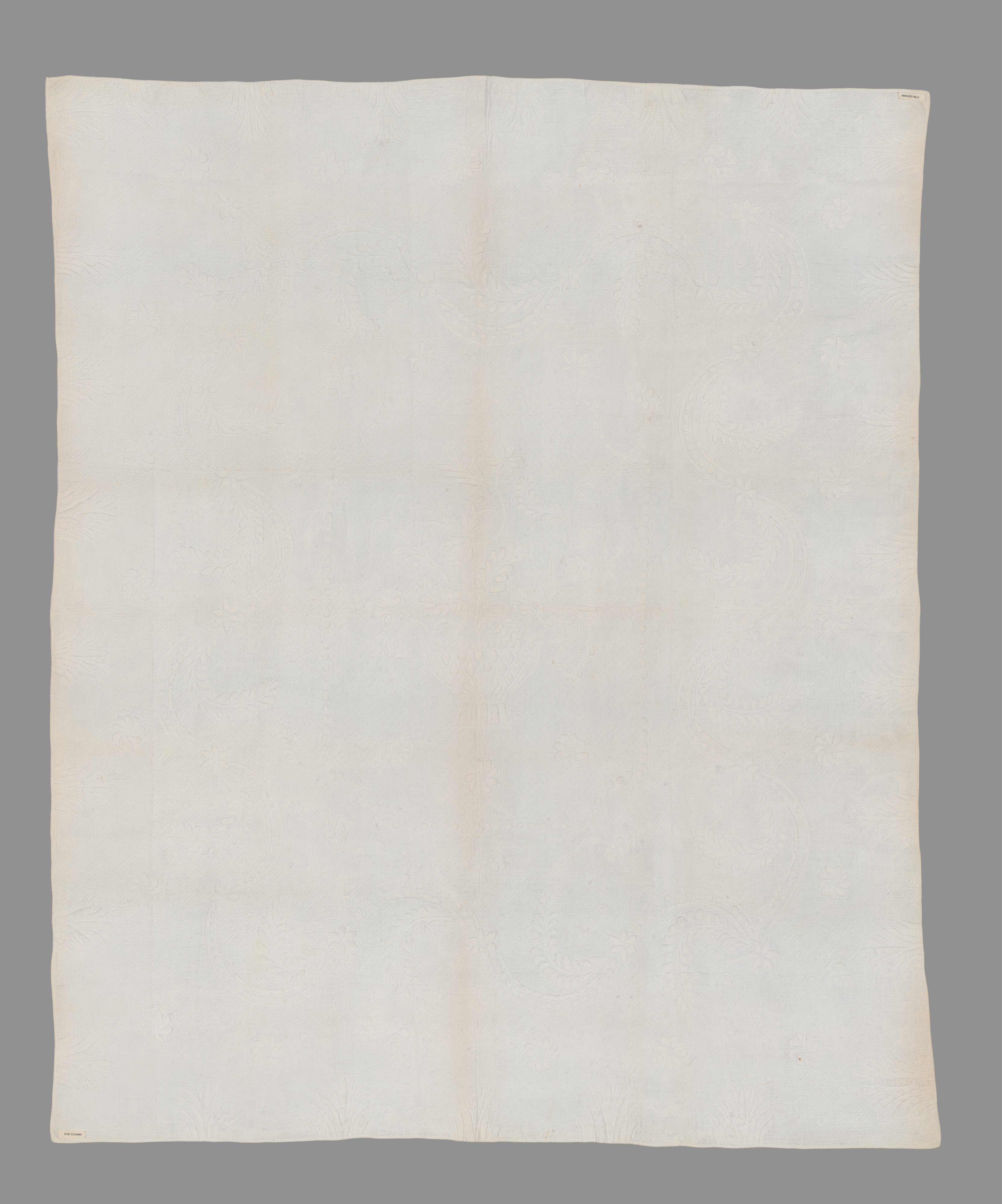Stuffed and corded quilt
Not on view
The initial impression of simplicity conveyed by this elegant, monochromatic coverlet, probably made for a bed or table, belies the intense skill and virtuoso technique demanded of its creator. Historically described as “whitework,” this is a whole-cloth quilt (as opposed to a pieced or “patchwork” quilt). It is distinguished by a total absence of colored pigment: instead, the decorative and figurative design is achieved on a bleached white support via quilted stitching, with additional relief created by highlighting and shadowing by inserting cords and pellets of stuffing between layers of support. Requiring considerably more skill and dexterity to stitch than pieced quilts, works like this were conventionally regarded in Europe as more subtle and tasteful than patchwork pieces. Attributed to the 1840s, right at the tail end of the popularity of whitework in Britain and North America, the quickly stuffed foliage, and deep diagonally quilted ground are typical of talented amateur production, speaking to the narrative of women working to embellish their own homes and those of their friends and relatives with unique works.
This image cannot be enlarged, viewed at full screen, or downloaded.
This artwork is meant to be viewed from right to left. Scroll left to view more.



